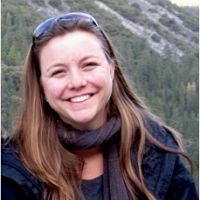Orem & Pelletier, 2015
Quantifying the time scale of elevated geomorphic response following wildfires using multi-temporal LiDAR data: An example from the Las Conchas fire, Jemez Mountains, New Mexico
Orem C.A. and Pelletier J.D. (2015)
Geomorphology 232: 224–238
-
Catalina-Jemez, GRAD STUDENT
-
Catalina-Jemez, INVESTIGATOR
Abstract
Sediment yields commonly increase following wildfires in mountainous landscapes. Quantifying the magnitude and duration of elevated sediment yields following wildfires is important for quantifying the relative importance of wildfire-affected versus non-wildfire-affected erosion in the long-term evolution of landscapes and for understanding the processes of post-wildfire erosion. In this study we use bi-annual terrestrial laser scanning (TLS) surveys conducted over a 2-yr period together with repeat airborne laser scanning (ALS) surveys conducted over a 1-yr period to estimate the dependence of sediment yield on time following the high-severity Las Conchas fire of 2011 within two small (approximately 1.3 km2) watersheds. The dependence of sediment yield on time since the wildfire was quantified using DEMs of Difference (DoDs) of the upland watersheds (to measure erosion) and of the adjacent piedmonts (to measure the deposition of eroded sediment). Over the 2-yr study period, sediment volume decreased linearly with time and sediment yield decreased exponentially with time in one watershed, while the other watershed showed a more complex relationship with time influenced by the specific sequence of rainstorms that impacted that watershed. Both watersheds had a recovery time of approximately 1 yr, suggesting that vegetation regrowth and the stabilization of incised valley bottoms were primarily responsible for the decline in sediment yield versus time following the wildfire. Multi-temporal DoDs of the piedmonts show how they responded to the delivery of elevated sediment yields from the upland watersheds, i.e. by (1) incision of the proximal portion of the piedmont, triggering distal deposition, (2) infilling of the incised channel and avulsion, and (3) incision of the distal portion, creating an incised channel connecting the proximal and distal ends of the piedmont. The dynamic nature of incision/aggradation and channel shifting on piedmonts following wildfires has important implications for post-wildfire flood-hazard assessments.
Citation
Orem C.A. and Pelletier J.D. (2015): Quantifying the time scale of elevated geomorphic response following wildfires using multi-temporal LiDAR data: An example from the Las Conchas fire, Jemez Mountains, New Mexico. Geomorphology 232: 224–238. DOI: 10.1016/j.geomorph.2015.01.006
 This Paper/Book acknowledges NSF CZO grant support.
This Paper/Book acknowledges NSF CZO grant support.
Associated Data
Jemez River Basin - LiDAR - Terrestrial Laser Scan (2011-2013)
3 components •
Jemez River Basin, Jemez 2011 Burned ZOB •
GIS / Remote Sensing, Geomorphology •
Caitlin Orem; Jon Pelletier
Explore Further


